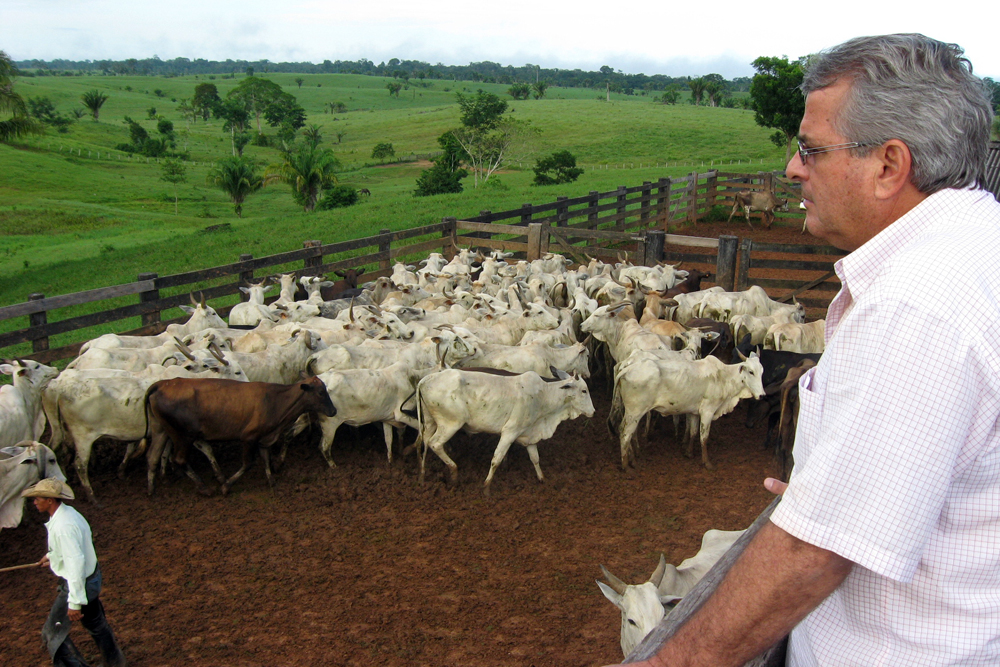

For over a century, the rubber tappers of Acre, Brazil collected the valuable sap of the rubber trees from the forests of the western Amazon. As the demand for natural rubber declined, however, the Brazilian government sought to stimulate the economy in the 1970's by encouraging southern ranchers to bring their cattle to the isolated state and convert the forests to pastureland.
During the dramatic land conflicts that ensued, rubber tappers captured international media attention by arguing that their harvesting of rubber and other products from the standing forest gave them a livelihood, while at the same time contributing to the preservation of the Amazonian rain forest. While much has been written about the internationally celebrated "forest guardian" rubber tappers, few researchers have tried to understand the ranchers, who, in the minds of many, remain the violent and environmentally destructive villains of Amazonia.
In an article titled "Black Hats and Smooth Hands: Elite Status, Environmentalism, and Work Among the Ranchers of Acre, Brazil," UC Santa Barbara anthropologist Jeffrey Hoelle studies the growing cattle industry as it related to rubber tappers, ranchers, and other rural groups. His article, which received the Eric R. Wolf Prize from the Society for the Anthropology of Work, appeared in a recent issue of the journal Anthropology of Work Review.
"Cattle raising is a leading driver of deforestation in the Amazon. It is a very contentious issue, and, in some ways, the ranchers have become the unquestioned bad guys of the region," said Hoelle, an assistant professor of anthropology. "But many rural groups see them as a model of the success and status that they want. No one has ever talked about the meaning of cattle raising, and the meaning of carving out a space within the forest in the Brazilian Amazon.
According to Hoelle, to resolve issues related to land use and deforestation in the Amazon, ranchers must be brought into the dialogue. "As is the case with any Amazonian research, if you want to preserve the rain forest, it makes sense to work with everyone –– especially those that have the most power." Generating a more nuanced understanding of the ranchers is an essential step in moving toward larger goals of sustainability and rain forest preservation.
Hoelle's research helped him develop that more nuanced understanding. He also found that ranchers aren't the only people who support cattle raising in the Amazon. Others, including rubber tappers, are moving toward that industry because of the economic advantages it offers. "Pastureland is worth more than forest," Hoelle noted, "and rubber is heavy and seasonal. But you can always walk your cow to market, milk it, and use it to carry your forest products." It's hard to compete with cattle raising in Amazonia, he added, noting that production has exploded over the past decade, fueling Brazil's rise to the top of global beef exporting countries.
Through his work, Hoelle also developed a sense of how groups could be opposed to deforestation regulations. According to current Brazilian forest law, ranchers are required to preserve 80 percent of their land as forest. "They don't like government officials telling them what to do with their land, particularly when they feel that the message is really coming from wealthy countries that already cut down much of their own forests," Hoelle said.
He noted that the ranchers are active in campaigns to revise the forest law. "They're just trying to get it to be more fair," he said, "or, to be compensated in some way for the land they can't use. They're told to sacrifice for the good of the world, but many look at North American and European environmentalists and see hypocrites trying to hold them back."
Some of the ranchers, as Hoelle learned through interviews and interaction, did not come to the Amazon as wealthy entrepreneurs, and their opposition to deforestation regulations is based on more than the pursuit of profit. "Many of the ranchers came to Amazonia in the 1970's, at a time when the forest was seen as little more than an obstacle, and they understood their work as pioneers opening the frontier," he said. "Only a few of them were rich when they came; the rest worked hard to get what they have today. I can't speak to the past violence of the ranchers, which was a topic they universally attributed to a few ‘bad apples,' but I did come to understand their mindset. They and others quote the bible, talking about how God gave humans the land and the beasts and told them to make it productive. They cite the songs about hard work. For many rural Amazonians –– not just ranchers –– leaving the land idle is a sin, and leaving the forest intact is a sign of laziness."
Hoelle said he doesn't defend the ranchers, but he does understand their perspective better now than before he began his research. "Anthropologists and other social scientists are often drawn to the underdog," he explained. "I am no different. I went to Acre initially thinking about the forest-saving rubber tappers, and was prepared to look down my nose at the ranchers. But what good would that do? Finding a balance between environmental preservation, social justice, and economic development requires better understanding the perspectives of all groups living on the land in Amazonia, especially those with the most land, money, and power –– the ranchers.
It also means asking why cattle raising now makes sense to a poor rubber tapper, instead of blaming the ranchers for deforestation. It is complicated, really, and this study is just the beginning."
Related Links



